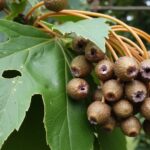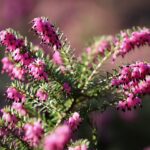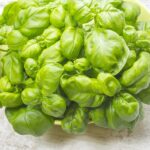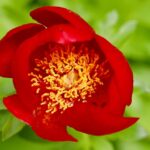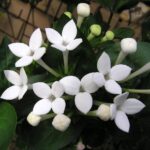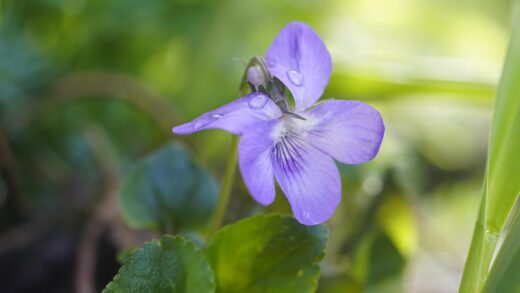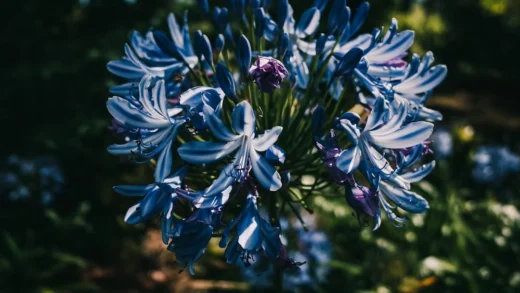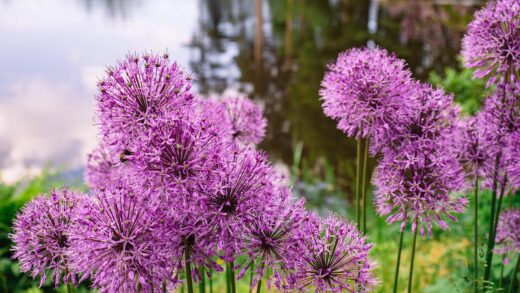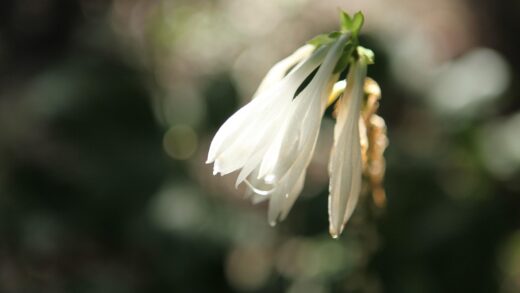Pruning is an essential horticultural practice that plays a vital role in maintaining the health, shape, and aesthetic appeal of a Dieffenbachia. While it may seem counterintuitive to cut parts off a plant you are trying to grow, strategic pruning encourages fuller, more vigorous growth and allows the grower to manage the plant’s size and form. Over time, it is natural for a Dieffenbachia to become tall and “leggy,” with a long, bare lower stem topped by a cluster of leaves. Pruning is the primary method for correcting this habit, rejuvenating the plant, and stimulating the growth of new foliage from the base or along the stem for a more compact and attractive appearance.
The decision to prune can be driven by several factors. It may be a reactive measure to remove yellowing, dead, or damaged leaves, which is a basic part of plant hygiene that should be done regularly. More significantly, it can be a proactive step to control the plant’s height, especially when it begins to outgrow its allotted space. The most transformative type of pruning, however, is a hard cutback, or rejuvenation pruning, which is performed on a mature, leggy specimen to encourage it to produce a new flush of dense growth.
Understanding the right time to prune and the proper techniques to use is crucial for a successful outcome. Pruning at the wrong time of year can stress the plant, while using improper tools or making incorrect cuts can invite disease. Furthermore, the practice of pruning a Dieffenbachia is intrinsically linked to propagation; the healthy top portions that are pruned off can be easily rooted to create new plants, ensuring that no part of this valuable specimen goes to waste.
It is also imperative to approach the task with a full awareness of the plant’s toxicity. The sap of the Dieffenbachia is a potent irritant, and proper safety precautions, such as wearing gloves and washing hands and tools thoroughly, are non-negotiable. By combining this knowledge of safety with the correct techniques, pruning becomes a safe and rewarding activity that empowers a grower to shape and guide the growth of their plant, ensuring its lasting beauty and vitality for years to come.
Reasons for pruning and cutting back
One of the primary and most common reasons for pruning a Dieffenbachia is for basic maintenance and aesthetics. As the plant grows, it is natural for the oldest, lowest leaves to gradually yellow and wither. These senescent leaves are no longer contributing to the plant’s health and can detract from its overall appearance. Regularly removing these spent leaves by cutting them off at the base of their petiole (leaf stalk) keeps the plant looking tidy and clean. This type of pruning also helps to improve air circulation around the base of the plant and removes potential hiding spots for pests.
The most significant motivation for a major pruning or cutting back is to manage the plant’s size and correct its natural growth habit. Dieffenbachia has an apical dominance growth pattern, meaning it tends to grow primarily from the top bud, resulting in a single, upward-growing stem. Over time, as lower leaves are naturally shed, this leads to a “palm tree” effect with a long, bare cane topped by a tuft of leaves. Pruning the top of this main stem breaks the apical dominance, which in turn signals the dormant buds located lower down on the stem to begin growing, resulting in a fuller, bushier plant.
Pruning is also a necessary response to damage or disease. If leaves are physically torn, or if they develop significant brown spots from sunburn or a fungal infection, removing the affected foliage is often the best course of action. This not only improves the plant’s appearance but, in the case of disease, helps to prevent the pathogen from spreading to healthy parts of the plant. If a portion of the main stem becomes soft or shows signs of rot, it must be cut back to a healthy, firm section of tissue to save the rest of the plant.
Finally, pruning is directly linked to propagation. When you cut back a tall, leggy plant, the healthy top section, complete with its crown of leaves, is a perfect candidate for a cutting. This top cutting can be rooted in water or soil to start a new, more compact plant. The remaining sections of the bare cane can also be cut into smaller pieces and propagated, meaning a single pruning session can be an incredibly productive way to multiply your plant collection while simultaneously rejuvenating the parent plant.
The best time to prune
The timing of a pruning session can have a significant impact on how well and how quickly the Dieffenbachia recovers and responds with new growth. The ideal time to perform any major pruning or cutting back is during the plant’s active growing season, which is typically in the spring or early summer. During this period, the plant is photosynthesizing at its peak rate and has the most energy reserves available to heal the wound and push out new shoots. Pruning in spring gives the plant the entire summer to recover and fill out.
Pruning during the plant’s active growth phase will yield the fastest results. After the main stem is cut, new growth from the latent buds along the remaining cane will usually appear within a few weeks. The cuttings taken during this time will also root much more quickly and reliably due to the plant’s vigorous metabolic state. This synergy between pruning and the plant’s natural growth cycle makes spring the optimal season for rejuvenation.
While minor pruning, such as trimming off a single yellowing leaf, can be done at any time of the year without causing significant stress to the plant, it is best to avoid major structural pruning during the autumn and winter. In this dormant period, the plant’s growth has slowed dramatically, and it has fewer energy resources. A major pruning at this time will be a greater shock to the system, and the plant will be very slow to respond with new growth, if it responds at all before spring. The open wound from the cut will also take longer to heal, potentially leaving it more susceptible to infection.
If a Dieffenbachia is severely overgrown and you are eager to prune it, it is worth waiting until the very end of winter or the first signs of early spring. As soon as you notice the first indications of new growth, such as a small new leaf beginning to unfurl at the top, it signals that the plant is breaking dormancy. This is the green light to proceed with any planned cutting back, as the plant is entering its growth phase and will be able to recover effectively.
Tools and safety precautions
When pruning a Dieffenbachia, using the right tool is essential for making a clean cut that will heal quickly and minimize damage to the plant. For removing individual leaves or cutting thinner stems, a sharp, clean pair of pruning shears (secateurs) or even a sturdy pair of scissors is sufficient. For cutting through the thick, woody main cane of a mature plant, a more robust tool like a serrated knife or a small pruning saw may be necessary to make a clean cut without crushing the stem tissues. The key is that the tool must be sharp to avoid jagged edges, which can be more prone to disease.
Before every pruning session, it is absolutely critical to sterilize your tools. Plant pathogens, including bacteria, fungi, and viruses, can easily be transferred from one plant to another, or even from a diseased part of a plant to a healthy part, on the surface of a pruning tool. To sterilize your tools, wipe the blades thoroughly with 70% isopropyl (rubbing) alcohol or dip them in a solution of one part household bleach to nine parts water. This simple step is one of the most important aspects of plant hygiene and disease prevention.
The most important safety precaution when pruning a Dieffenbachia is to protect yourself from its toxic sap. The plant’s tissues contain calcium oxalate crystals, which can cause severe skin irritation (contact dermatitis) and are extremely painful if they come into contact with the eyes or mouth. Always wear waterproof gardening gloves to prevent the sap from touching your skin. It is also advisable to wear safety glasses, especially when making large cuts that might cause the sap to splash.
After you have finished pruning, be sure to wash your hands and your tools thoroughly with soap and water, even if you were wearing gloves. Dispose of the pruned plant material carefully, keeping it away from children and pets who might be tempted to chew on it. By taking these straightforward safety measures, you can ensure that the pruning process is safe for both you and the plant, allowing you to enjoy the benefits without any of the risks.
Techniques for cutting back a leggy plant
Cutting back a tall, leggy Dieffenbachia is a straightforward process that can dramatically improve its appearance. The first step is to decide on the desired height for the rejuvenated plant. You can cut the main stem back quite hard, as new growth can sprout from any of the dormant nodes along the remaining cane. A good rule of thumb is to cut the stem back to a height of about 15 cm (6 inches) from the soil line, ensuring that there are at least a few nodes left on the stump from which new shoots can emerge.
Once you have determined the cutting point, use your sterilized, sharp tool to make a clean, straight cut across the cane. After making the cut, the remaining stump will be left in the pot. Continue to care for this base as you normally would, providing it with bright, indirect light and watering it when the soil begins to dry out. Be patient; it may take several weeks, but you should soon see one or more new growth points beginning to swell and emerge from the nodes on the old stem. These will grow into new leafy stems, creating a much fuller and more compact plant.
The top section that you have cut off, with its crown of leaves, should not be discarded. This is a prime cutting for propagation. To prepare it, trim the base of the cutting so that you have a stem of about 15-20 cm (6-8 inches) below the lowest leaves. You can then remove one or two of the lowest leaves to expose more nodes on the stem. This top cutting can then be rooted in a jar of water or planted directly into a pot with a moist rooting medium. In a few weeks, it will develop its own root system and you will have a brand new, perfectly formed plant.
If the section of bare cane between your top cut and the stump is long, this too can be used for propagation. Cut this cane into several smaller segments, each about 5-10 cm (2-4 inches) long and containing at least one or two nodes. These cane segments can be laid horizontally on top of moist potting soil, with the nodes pointing up, and partially pressed into the medium. Alternatively, they can be planted vertically, ensuring you maintain the correct top-bottom orientation. Keep the soil moist and in a warm, bright location, and new plants will eventually sprout from the nodes.
Pruning for shape and encouraging fullness
Beyond correcting legginess, pruning can be used as an ongoing technique to shape a Dieffenbachia and encourage a fuller, bushier growth habit from a young age. When a plant is still young and compact, you can “pinch back” the very top of the main growing stem. This involves removing just the newest, topmost leaf and the terminal bud. This simple action removes the source of the growth-inhibiting hormones that cause apical dominance, thereby encouraging the plant to activate lateral buds and branch out, creating multiple stems instead of just one.
This pinching technique can be repeated periodically as the plant grows. If the plant produces several new stems after the initial pinch, you can allow these stems to grow for a while and then pinch the tips of these new stems as well. This process of regularly pinching back the growing tips will result in a dense, multi-stemmed, and well-branched plant that is much less likely to become leggy in the first place. It is a proactive way to manage the plant’s shape and maintain a compact form.
For a plant that already has multiple stems, you can use pruning to maintain a balanced and symmetrical shape. If one stem is growing much faster or taller than the others, you can prune it back to a height that is more in line with the rest of the foliage. This will not only improve the plant’s overall appearance but will also encourage that pruned stem to become bushier. This type of selective pruning allows you to act as a sculptor, guiding the plant’s growth to achieve the desired aesthetic.
It is important to remember that every cut you make will stimulate new growth from a point just below the cut. You can use this principle to your advantage to “direct” new growth and fill in any sparse areas. If one side of your plant is looking a bit thin, for example, you can prune a stem on that side to encourage it to branch out and create more fullness in that specific area. Through these small, strategic cuts, you can maintain a beautifully shaped and lush Dieffenbachia for many years.

